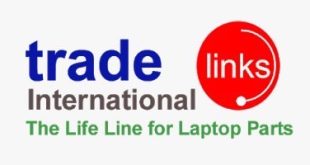Industrial liquid packaging is an essential aspect of operations across various industries, from chemicals and petrochemicals to food and beverage production. The efficiency, safety, and compliance of industrial fluid packaging are critical, not only for ensuring that the products are stored and transported properly, but also for safeguarding workers and the environment.
In this article, we will discuss effective strategies for managing industrial fluid packaging, including material selection, safety protocols, compliance with regulations, and sustainability considerations.
Understanding the Importance of Proper Fluid Packaging
Before diving into strategies, it’s important to understand why industrial fluid packaging is such a critical component in the supply chain:
- Safety: Proper packaging prevents leaks and spills, reducing the risk of accidents and exposure to hazardous materials.
- Regulatory Compliance: Industries must adhere to strict regulations regarding the handling, storage, and transportation of fluids, particularly hazardous ones.
- Cost Efficiency: Packaging that is designed to withstand harsh conditions can reduce product loss and minimize the risk of costly accidents.
- Environmental Impact: Sustainable fluid packaging practices help reduce waste and the environmental footprint of industrial operations.
Strategy 1: Choosing the Right Packaging Materials
One of the most critical factors in fluid packaging is selecting the right material for the job. Depending on the type of fluid being stored or transported, certain materials will be more appropriate than others.
- Plastic (HDPE, LDPE, PP):
High-density polyethylene (HDPE), low-density polyethylene (LDPE), and polypropylene (PP) are some of the most common materials used in fluid packaging. These materials are highly resistant to corrosion, chemicals, and impact, making them ideal for storing a wide variety of industrial fluids. - Steel and Aluminum:
For highly corrosive or hazardous materials, steel or aluminum containers may be required. Steel drums, for example, are commonly used for transporting oil and other petroleum products, while aluminum may be used for food and beverage applications due to its lighter weight and corrosion resistance. - Composite Materials:
For certain applications, composite materials that combine the strength of metals with the chemical resistance of plastics may be used. These materials can offer the best of both worlds—durability and chemical protection. - Glass:
While less common for industrial fluids, glass can be used for high-purity applications or when the fluid is sensitive to contamination. However, it is less practical due to its fragility.
Strategy 2: Ensuring Packaging Compatibility with Fluids
Not all packaging materials are compatible with all types of fluids. It’s essential to ensure that the material used for packaging does not react with the fluid it contains. Chemical reactions between the fluid and the container can lead to contamination, degradation of the container, or leaks. Conduct compatibility testing before selecting a packaging material, especially for hazardous or corrosive fluids.
Strategy 3: Implementing Proper Sealing and Containment Techniques
One of the most crucial aspects of fluid packaging is ensuring that containers are properly sealed to prevent leaks, spills, or contamination. Various sealing methods can be employed depending on the type of container and fluid:
- Gasket Seals:
Gasket seals provide a tight closure for drums, barrels, and containers, preventing leaks and maintaining the integrity of the fluid inside. Ensure that gaskets are made from compatible materials that won’t degrade upon contact with the fluid. - Tamper-Evident Seals:
Tamper-evident seals are vital in industries where contamination or tampering is a concern, such as food and beverage or pharmaceuticals. These seals provide a visual indication if the packaging has been compromised. - Double Sealing for Hazardous Materials:
When dealing with hazardous or highly volatile fluids, it’s often necessary to implement double-sealing techniques. This involves using both an internal and external seal to prevent leaks even if one seal fails.
Strategy 4: Following Safety and Compliance Regulations
Industrial fluid packaging must adhere to various safety standards and regulations depending on the industry and type of fluid. Some key regulations to consider include:
- Hazardous Material Regulations (HMR):
In the United States, the Department of Transportation (DOT) regulates the packaging and transportation of hazardous materials. These regulations are designed to protect public safety and the environment. - United Nations Packaging Codes:
For global transportation of dangerous goods, the UN assigns packaging codes based on the material’s properties. These codes help ensure that fluids are packaged in containers that meet international safety standards. - OSHA Requirements:
The Occupational Safety and Health Administration (OSHA) sets guidelines for the safe handling and storage of industrial fluids. Ensure your packaging process complies with OSHA standards to minimize workplace hazards. - Industry-Specific Standards:
In addition to federal regulations, many industries have their own specific standards for fluid packaging. For example, the food and beverage industry must comply with FDA guidelines, while the chemical industry follows EPA standards for hazardous waste.
Strategy 5: Incorporating Sustainable Packaging Solutions
Sustainability is becoming increasingly important in industrial operations, and fluid packaging is no exception. There are several strategies to make fluid packaging more environmentally friendly:
- Recyclable Materials:
Using materials that can be easily recycled, such as certain plastics or metals, can help reduce waste and lower the environmental impact of packaging. - Refillable Containers:
Reusable or refillable containers can significantly cut down on packaging waste. This is especially useful for companies that use large quantities of the same fluids, such as oils or cleaning agents. - Biodegradable Packaging:
For non-hazardous fluids, biodegradable packaging options are available. These materials break down naturally over time, reducing the environmental footprint of industrial packaging. - Lightweight Packaging:
Reducing the weight of packaging materials can lower transportation costs and energy consumption. This can be achieved by using thinner yet durable materials or by switching to composite containers.
Strategy 6: Implementing Regular Inspection and Maintenance
Once fluids are packaged and stored, regular inspection and maintenance of containers are necessary to ensure long-term safety and compliance:
- Leak Detection Systems:
Implement leak detection systems in your storage facilities to catch any leaks or spills early. This is especially important for hazardous materials. - Routine Inspection:
Regularly inspect fluid containers for signs of wear, corrosion, or damage. Replace containers that show signs of degradation to prevent spills or leaks. - Maintenance of Seals and Gaskets:
Over time, seals and gaskets can degrade, especially when exposed to harsh chemicals or extreme temperatures. Regularly check and replace seals as needed to maintain container integrity.
Conclusion
Managing industrial liquid packaging requires careful attention to material selection, safety protocols, and regulatory compliance. By choosing the right packaging materials, ensuring compatibility with fluids, following safety standards, and incorporating sustainable practices, businesses can optimize their fluid packaging processes. Regular inspection and maintenance will further ensure the safety and efficiency of your operations, minimizing risks and enhancing productivity.
 Diverse Perspectives: Insights & Stories Exploring Ideas, Sharing Knowledge
Diverse Perspectives: Insights & Stories Exploring Ideas, Sharing Knowledge





